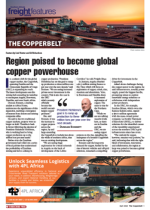Rapid population growth, resulting in millions of unemployed youth, is one of the biggest risks to stability in both Zambia and the Democratic Republic of Congo (DRC).According to the World Bank, Zambia is experiencing a large demographic shift.It is one of the world’s youngest countries by median age.The population, much of it urban, is estimated at about 19.6 million (2021), with a growth rate of 2.7% per year.The population is expected to double in the next 25 years, putting additional pressure on the demand for jobs, health care, and other social services.Neighbouring DRC faces similar challenges.According to the Human Rights Watch 2023 report on the DRC, the human rights and security situation in the Democratic Republic of Congo continued to deteriorate, particularly in eastern provinces.“President Félix Tshisekedi’s administration made little progress on promised systemic reforms to break the cycles of violence, abuse, corruption, and impunity that have plagued the country for decades,” it states.This area falls outside the Copperbelt, which is to the south of the country.Relief Web estimates that around seven million people are displaced in the DRC due to infiltration by armed groups from neighbouring countries.In contrast, USAid describes Zambia as “a regional model of peaceful and multi-political transitions”.It adds the caveat: “Corruption and persistent democratic weaknesses threaten this st abilit y.“The August 2021 elections ushered in Zambia’s third transition of power, offering opportunities for democratic governance and fiscal reforms while setting high public expectations for the government to deliver on democracy’s dividend. “Zambia’s political setting remains vulnerable, with an underlying economic and societal discord as political and economic power remains in the hands of elites.”World Bank statistics place Zambia among the countries with the highest levels of poverty and inequality globally.Some 60% of the population was classified as poor in 2022, up from 54.4% in 2015.Urban poverty is estimated at 31.9% in 2022 and rural at 75%.It is worse in the DRC, which the World Bank ranks among the five poorest nations in the world.An estimated 74.6% of Congolese people lived on less than $2.15 a day in 2023. About one out of six people existing in extreme poverty in sub–Saharan Africa live in the DRC.Inequalities in both countries pose risks of political and social instability.The Organization of Economic Development puts the DRC and Zambia country risks at the highest level of 7.

